WELLFLEET — Mayo Beach is bustling on an August evening. SUVs are loaded with beach gear, and musicians tune up under the tent across the street. In the background, the plunk of pickleball on paddle echoes from the court. But continue down Chequessett Neck Road a few miles to find a subtler symphony — that of the Herring River.
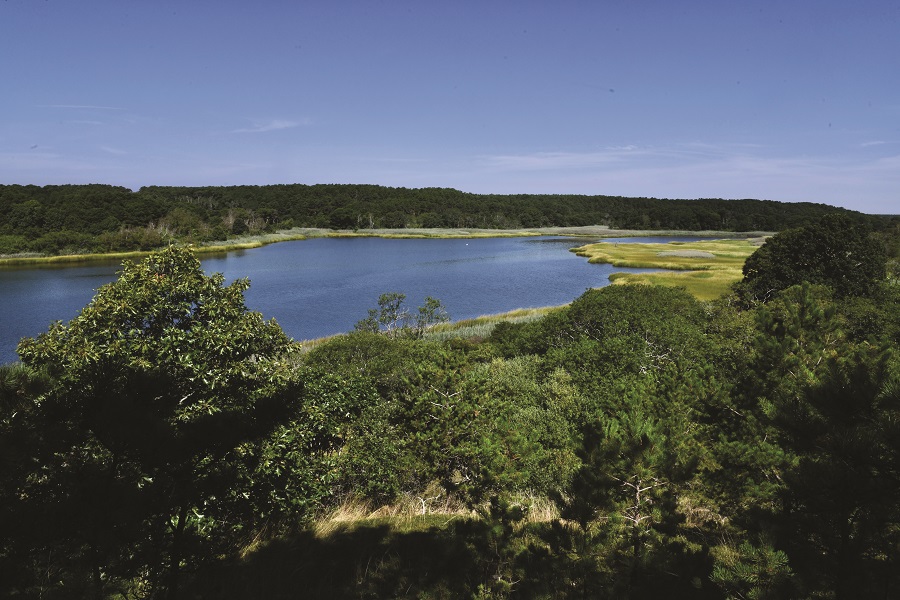
Behind the dike, there is a quick splash as an osprey swoops to the river’s surface and takes a menhaden. A clapper rail, unseen, squawks from the marsh grass, which whistles in the wind. The encroaching tide pours through the dike and pushes inland.
The Herring River, fed by the fresh water of Herring Pond that meets the saltwater tide of Wellfleet Harbor, is a favored spot for birders, including Stephen Broker, a retired science educator who lives in Cheshire, Conn. and Wellfleet.
Broker deftly paddles his canoe behind the dike that has restricted the tidal flow here since 1907. This place, where a student journalist hopes to see a heron, is familiar to him. Broker first began exploring the river with his brother Thomas in the early 1960s. The family first came to Wellfleet after his father returned from World War II, and among his photographs are two of Chequessett Neck and Griffin Island — then a sandy treeless landscape — taken by his parents, Thomas and Evelyn, in 1946.
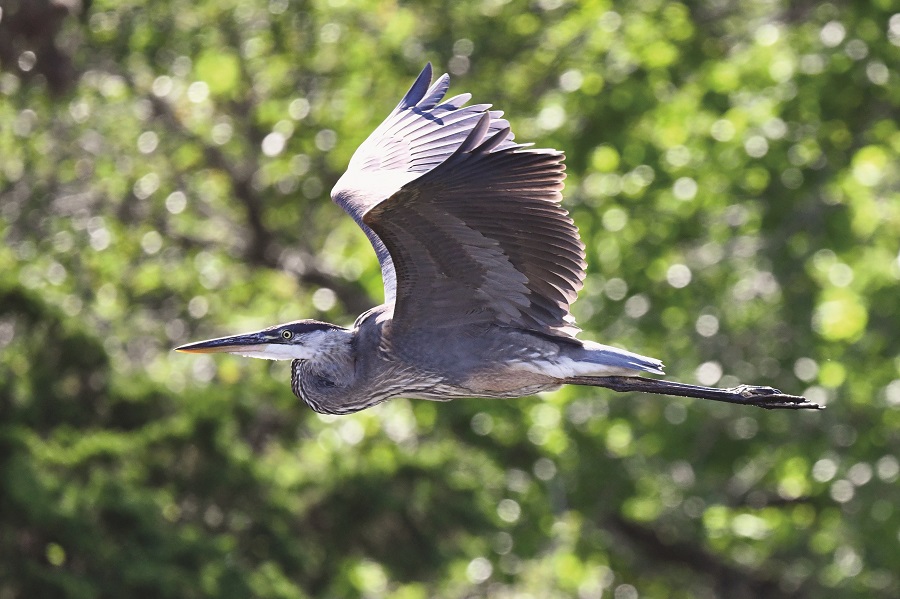
Those childhood explorations, Broker says, led him to deepen his understanding of natural history by studying biology at Wesleyan University and later earning a master’s degree in ecology and wildlife management at Yale, in what was then called the forestry school.
Returning again and again to the cottage his parents built on Long Pond Road in 1952 (the house now boasts improvements like electricity and running water), Broker has become a meticulous documentarian of the birds of Wellfleet, with many of his sightings published in Mass Audubon’s Breeding Bird Atlas 2, compiled between 2007 and 2011.
Broker launches behind the dike. “That part is easy,” he says. He can lower his 17-foot canoe down the slope single-handed. Getting back up the slope is a challenge, though, when he’s in his usual lone research mode. He packs cushions, a spare paddle, and a dry bag for his binoculars and his camera (he uses a Nikon D50 with a 500 mm fixed lens to get close-ups). When he’s alone on the water it can be hard to control the canoe in the wind, so he’ll run it up on a mud flat to steady himself for taking pictures.
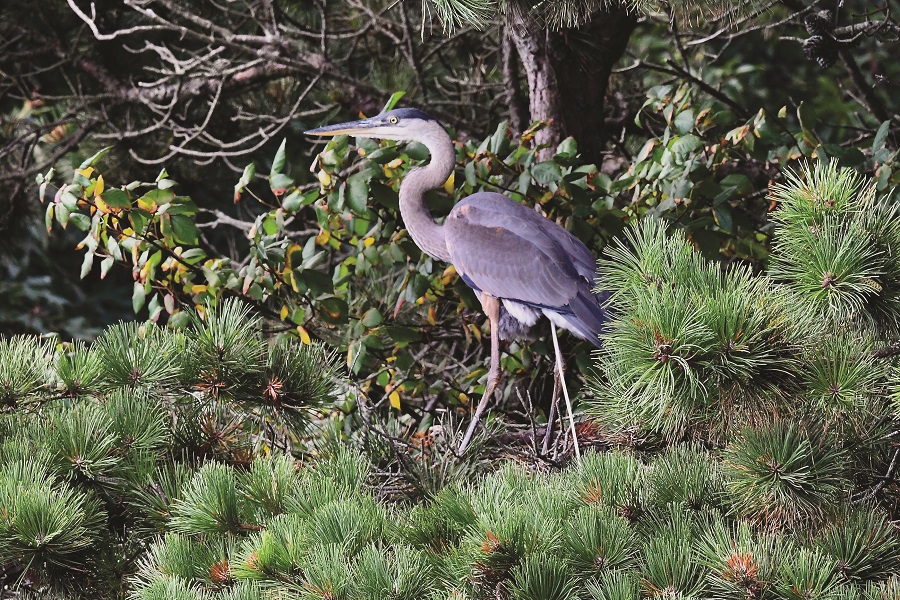
Today, with a writer and her friend on board, he’s well weighted. We are quiet, and for the most part our presence does not seem to disturb the birds. “The birds are doing what they’re doing,” Broker says. “In the canoe, motionless, and silent, birds will come within about six feet of the boat,” he says — much closer than they will when he’s on foot.
“West Cove No. 1” and “Mill Creek” are part of a nomenclature Broker has developed to describe locations on the river, which he uses when he posts on the Cornell Lab of Ornithology’s eBird database. He sees many in the broadest section of the river, just up from the dike, before it bends northwest and zigzags to High Toss Road. There are eight species of herons and egrets recorded on this Herring River “hot spot” — a total of 228 species in all. “A pretty good number,” says Broker.
He is looking forward to watching how the estuary responds as the restoration of the river progresses. He believes the chance to watch the increased tidal flow here will “be as interesting and informative as the ecological recovery of Yellowstone National Park following wildfires or the Mount St. Helens ecosystem recovery following volcanic eruption.”
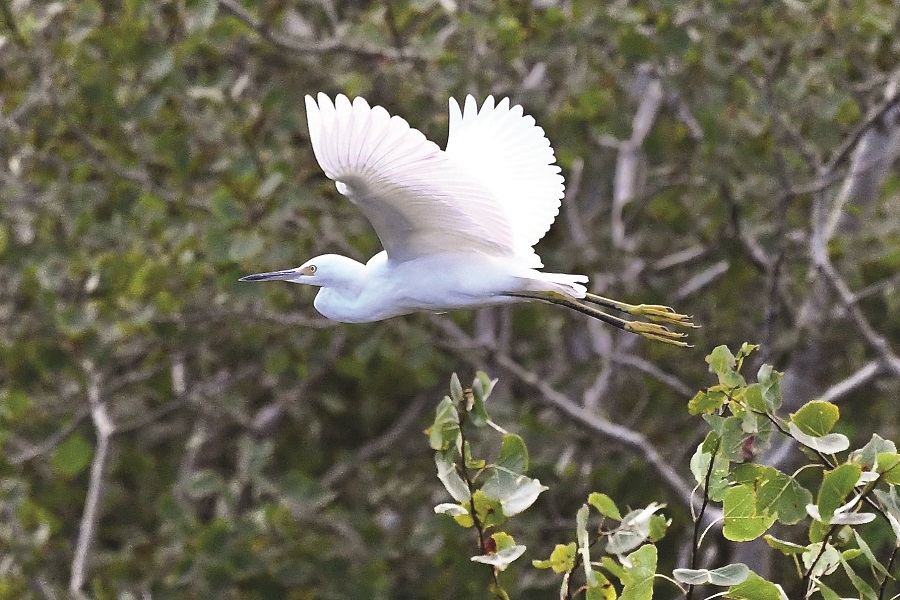
Another outcome he hopes to see: “Tom and I would canoe from Herring Pond to the mouth of the river,” he says. Could that become possible again? “Maybe, in time.”
At low tide, the great blue heron stands tall in the shallow water fishing with its long orange beak for a dinner of menhaden, crabs, herring, insects, and other invertebrates. Now, with the tide coming in, Broker points out seven blue-gray birds perched in the pitch pines that line the marsh.
Great blue herons nest in colonies, and although they are regularly seen on the Cape’s waterways, there has been only one confirmed record of a great blue heron nest in Barnstable County. The birds breed in swamps in the Berkshires, on Plum Island, and in other coastal areas of Massachusetts and migrate here once their young have fledged.

Another kind of heron is long-legged, long-necked, and wide-winged like its blue cousin; but the great egret we saw has beautiful white feathers. Like the good relatives they are, great egrets and great blue herons can be found sharing the same roosting trees at high tide. We saw two snowy egrets as well.
On the western hillside of the river, a family of five ospreys occupies the limbs of a dead tree. Their nest sits on a tall pole near the Chequessett Club, and they have come to the river to feed, Broker says. He follows an osprey with his camera as it flaps its wings and catches a breeze, gaining altitude. From a height of 30 feet, it dives to the water and comes up with a menhaden in its talons, then returns to the tree to feast.
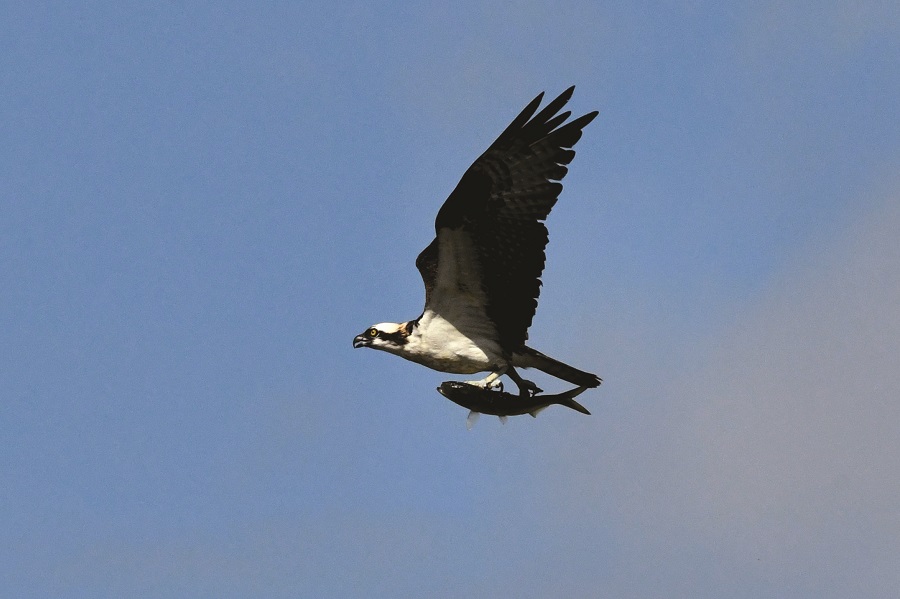
Broker first spotted a Virginia rail here in 2012. Then he confirmed clapper rails, a breeding pair, in 2013. There were only two confirmed records of these shy birds in Massachusetts up until then. We hear the clabbering call of a clapper rail hiding in the cordgrass where it lives, but it eluded us, staying out of the reach of human eye and camera lens this evening.
Additional reporting contributed by Teresa Parker.
